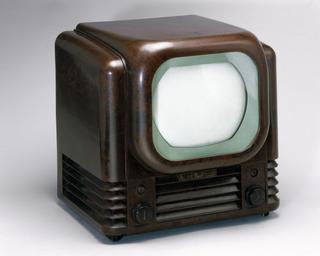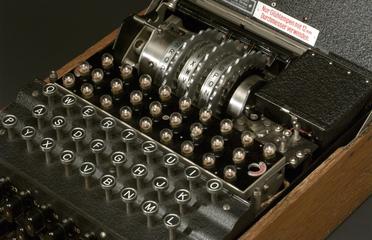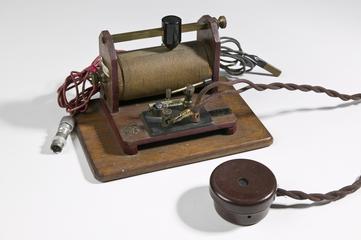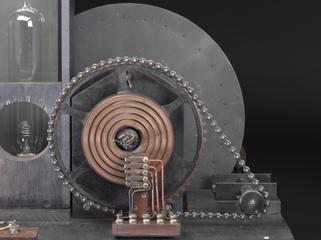
NT46 or NT57 silica triode valve from the early ground radar transmitter type TF3
NT46 or NT57 silica triode valve from the early ground radar transmitter type TF3, 1936. In wooden crate. Silica (fused quartz) had been used for the envelopes of high-power valves since about 1918, particularly for naval transmitters. Silica softens at a much higher temperature than glass, so the valves could dissipate more power.
The valve had smaller interelectrode capacitance and higher emission than the earlier design of silica valve it replaced and it was found possible to increase the emission still further by using a filament voltage 10% above the rated value. A pair of these valves could produce peak power outputs of up to 40kW.
The NT57 was one of the first valves to be designed specifically for radar. It was produced at the Admiralty Signals School (part of the Admiralty Signals Establishment) for incorporation in some of the first experimental transmitters built by Watson-Watt’s team at Bawdsey Research Station in Suffolk. Such was the secrecy surrounding radar that the Admiralty Signals Establishment engineer entrusted with the design was not told of the application.
In the late 1930s, Robert Watson-Watt’s team at Bawdsey Research Station in Suffolk developed three different types of experimental radar transmitters, of which this TF3 was the first to be developed and was handbuilt under by great secrecy by Watson-Watt and his team at Bawdsey. Only five TF3 transmitters were produced - four were used in early radar stations in 1937-38 and one was used for experimental work with a new silica tetrode valve, the NT60. The TF3 was a prototype of the MB2 mobile radar transmitter developed by Metropolitan Vickers Electrical Company in 1939 and put into production in 1940 for Chain Home radar stations during the Second World War.
Details
- Category:
- Radio Communication
- Object Number:
- 1947-137/6
- type:
- radar valve
- credit:
- Air Ministry (WC2)




